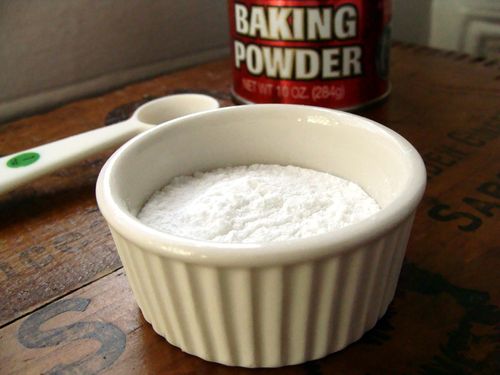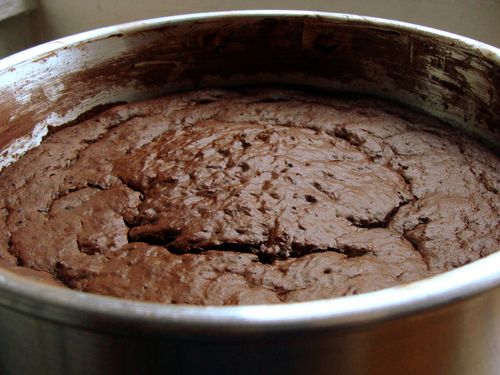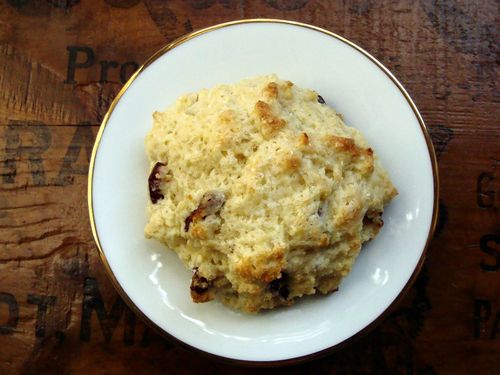homemade baking powder

I’m not a gambling woman. Not to say that I’m at all conservative. I just prefer to do my homework and go with a sure thing. Now that I’ve shared that side of my personality, you’ll be surprised to hear what I did this weekend.
It was the big party, remember. The Mr. turned 50, and I went on a cake baking marathon the week before to make his birthday cake wish come true. Three cakes in four days to be precise. Oh, the damage to my waistline, though it could’ve been worse had it not been for the willingness of my neighbors to take the surplus off my hands.
Well, I found myself in the kitchen the morning before, ready to bake the cakes—frosting would happen the next day, only to find I was out of baking powder. Yeah, I know, real genius, right? It was so cold out, and frankly the idea of leaving my cozy, warm apartment was not at all what I had in mind. I hadn’t even had my morning coffee.
The day before, I’d been talking with a friend about what she referred to as French yeast. She had me scratching my head and doing some wacky google searches before I thought to look up the French term she used and found out it was just baking powder—from France. In the midst of my discovery, I actually paid attention to the ingredients in baking powder. Now, I’d known for a long time I could make it myself, but it’s so easy to buy it already made.
So, talk about long story, made long. With this information still fresh in my mind, the figurative lightbulb went off, and I realized I could battle the single digit temperatures—factoring in the windchill, or I could be even braver and make my own baking powder. Sure, this isn’t exactly the stuff suspense novels are made of, but the Valrhona cocoa, King Arthur cake flour and all the butter at stake here were costly ingredients. Could my laziness possibly be rewarded with a successful chemistry lesson?
Luckily, I had all the ingredients I needed to make my concoction: baking soda, cream of tartar and cornstarch. Take a look at the cake below to see for yourself that it really worked. I even made scones with it too. Funny thing is you need three ingredients to make the one that’s readily available on every store shelf. But, if you find yourself in a pinch, then rest assured, you can get a rise without braving the elements.

toil, toil, boil and bubble…presto cako!
Homemade Baking Powder
makes 1 tablespoon plus 1 teaspoon (or 4 teaspoons)
Oddly enough, some recipes say to use this mix immediately. Why the rush? I mean all these ingredients store pretty well, and it’s not like they perform their chemical reaction as soon as they’re mixed, right?
1 teaspoon baking soda
2 teaspoons cream of tartar
1 teaspoon cornstarch
Whisk all ingredients together to mix well. Use as directed in whatever recipe you are following.

The recipe for these lemon cranberry yogurt scones are coming soon…

Melmcd99
This is SO cool. I love being able to learn something new everyday. Thanks for passing this along.
Christopher Roberts
This is fabulous information and I’m going to try it tomorrow. But I have a slightly nit-picky sounding question. If a tablespoon is equivalent to three teaspoons, and your recipe is comprised of four teaspoons worth of ingredients, isn’t the final product greater than a tablespoon? Is the final step to leave that extra teaspoon of mixture behind? Or should I infer that these four teaspoons of mixture are required to match the rising power of three teaspoons of regular baking powder?
Bethany
no WAY! You know how sometimes a recipe (such as a quickbread or muffin) that uses a lot of baking powder ends up tasting somewhat metallic or bitter? I’ve always avoided recipes using too much baking powder because I am afraid of that taste. Maybe this substitution is the answer….
xiuxiu
Thanks for the fabulous info!
Jennifer
Christopher – not nit picky at all, just a type on my part and thanks for pointing it out so there’s no confusion (it’s been corrected). I’ve been using this mixture interchangeably in my recipes.
Jennifer
Bethany – Have you tried using an aluminum-free baking powder (Rumford is one such brand). That may help eliminate that tinny taste. Same goes for making this mixture, so look for aluminum-free baking soda, which is readily available at health-food stores or the natural foods section of larger supermarkets.
Cathy
So useful to have published this, Jennifer! I’ve been making baking powder since reading Edna Lewis, who claims a metallic taste from commercial blends, and always made up a batch herself (using the same ratio you have here.) She says it keeps for 6 months in a jar.
Rick
You should use it soon because of the ingredients… baking soda is a base, and cream of tartar is actually potassium hydrogen tartrate – an acid salt… while both are stable in their dry form, they are hygroscopic (meaning they will pull moisture out of the air). And once they absorb some moisture, they are free to react with each other.
(Also why baking powder has a shelf life!)
kim.hormone-colored days
Interesting. I’ve kind of thought about this, but never seriously enough to see if I could do it. As always your baked good look YUM.
Kate @ Savour Fare
My recipe for homemade baking powder omits the cornstarch (I have to look up the proportions). It’s actually one I use fairly often, as I’m not fond of the taste of baking powder and the homemade stuff doesn’t have that same bitter flavor. It’s always worked fine.
Judy
I started making my own baking powder several months ago. My daughter thinks I’ll make air next!!!
Jennifer
Rick-thanks for the chemistry info! I’m still guessing this will last more than a few days since my can of Rumford baking powder had a shelf life of one year as per the expiration date, and that is essentially what is in this mixture.
Kate-A few recipes do say the cornstarch is optional but I was already worried since this was a special occasion and I was tickering around. Now you’ve given me the reassurance to try it without. Please feel free to share your cornstarch-free recipe in the comments here
Judy – Isn’t it great when they think we have superhuman powers. Now if only I could snap my fingers and have the laundry fold itself.
Mrs Ergül
Cool! I didn’t know it could be made like this! Thanks for sharing!
Danica
What an awesome idea – I would’ve never thought to try to create my own especially if I ran out. I NEED to give this a go.
Thanks Jennie!
Danica
Fuji Mama
Ok Jennie, this ROCKS!!! It hadn’t even occurred to me to THINK that this was possible!
Melanie
In most baking powders, aluminum is used in some form in the leavening, and what I learned in my Food Science class was that Aluminum is directly correlated with Alzheimer’s, so avoiding using aluminum will definitely benefit … everybody.
I only use my own “baking powder” whenever I bake or need to use it, and I try to avoid buying baked products elsewhere unless I know exactly what was used to make them.